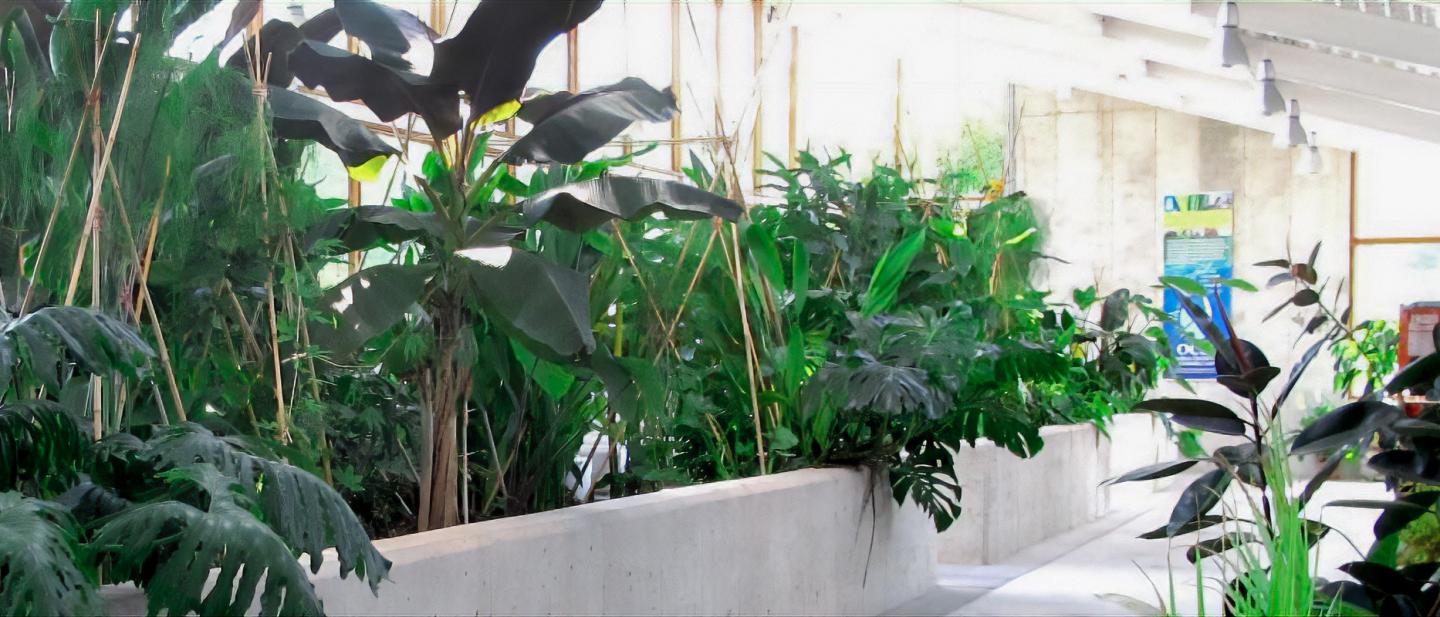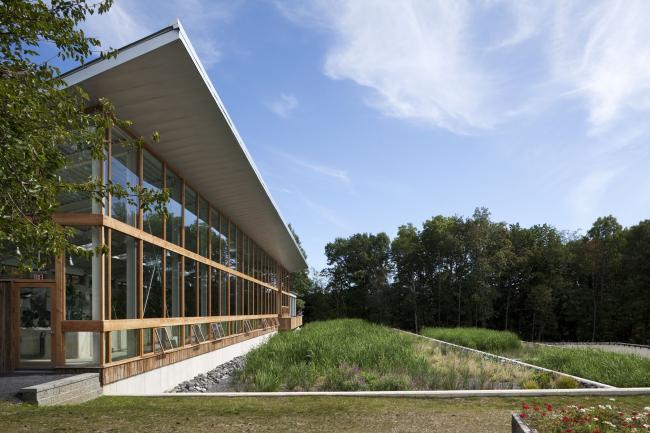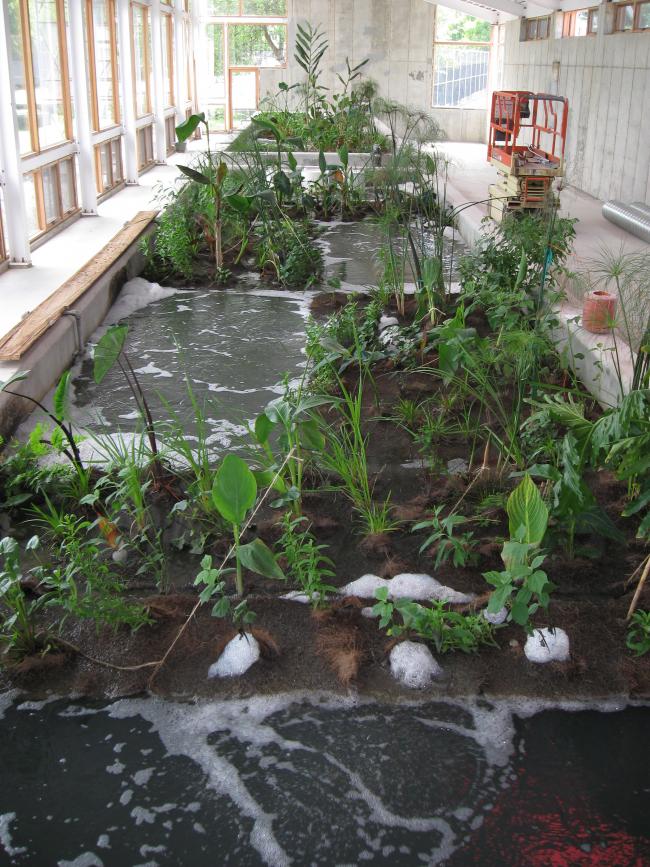There are four constructed wetlands in the Eco Machine™ at the Omega Center for Sustainable Living, each the size of a basketball court. They are three feet deep, lined with rubber, and completely filled with gravel. About two inches beneath the gravel is wastewater, which flows from the anoxic tanks, to the splitter box, to the upper two constructed wetlands. The wetlands use microorganisms and native plants, including cattails and bulrushes, to reduce biochemical oxygen demand, remove odorous gases, continue the denitrification process, and harvest nutrients such as phosphorus. As the wastewater flows through the wetlands, the microorganisms and plants are fed.
Once the wastewater is processed in the upper two constructed wetlands, it flows via gravity to the bottom two constructed wetlands. In total, a lot of digestion happens in the wetlands of the Eco Machine™ at the OCSL. There is a 75 percent increase in the water's clarity and a 90 percent reduction in the water's odor by the time it is ready to leave the wetlands to move to step 5, the aerated lagoons. However, not all the water that enters the wetlands travels to the aerated lagoons. The plants absorb some of the water during the purification process in the constructed wetlands, and some of the water evaporates.


